From Pregalleno, the two routes, tourist and hiking, follow the same path, running through the village on the left bank of the river Brembo along the municipal walkway, with some stretches on the cycle/pedestrian path in the valley and on a track leading to Ambria on the left-hand river bank. The historical route of the Priula Way is on the right bank but it has been replaced by modern roads. The Umberto I bridge connects the route to the places of interest and hospitality venues in San Pellegrino Terme.
Tracciato Storico
“The hamlet Ruspino was passed higher up and the path continued to reach Rigosa. From here the route began the descent that ended in front of the church of the Madonna of Caravaggio.
In San Pellegrino Terme, the path ran through a long portico (still visible) where a “caneva” – a market where basic goods were sold at prices set by the municipality – was soon set up. Today, this location in San Pellegrino bears the same name, Caneva. After San Pellegrino, the Way ran through the territory of Fuipiano al Brembo (today a hamlet of San Giovanni Bianco), passing in front of the small church of San Rocco; its position, much lower than the current road, suggests the height of the Priula Way that used to run directly in front. It then continued with three steps, namely brief ascents and descents made necessary by two rocky ridges, before entering the territory of San Giovanni Bianco.”
Itinerario escursionistico
Difficoltà: Turistico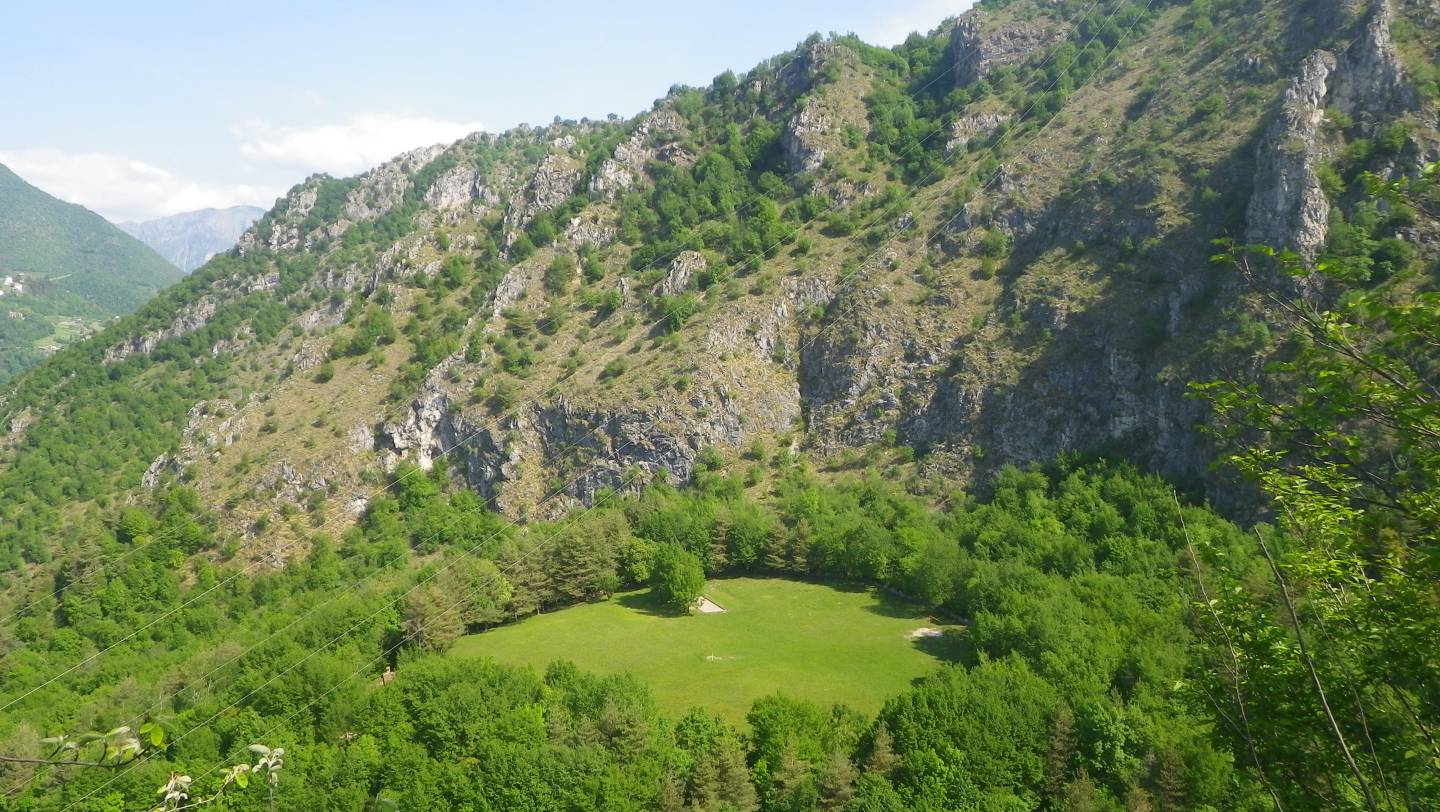
An extensive meadow clearing (alt. 473 m) on the right bank of the Morasca Valley, with CAI path n° 594 running close by. A traditional recreational venue with a small hut, a picnic area and a shrine belonging to the Giupponi family.
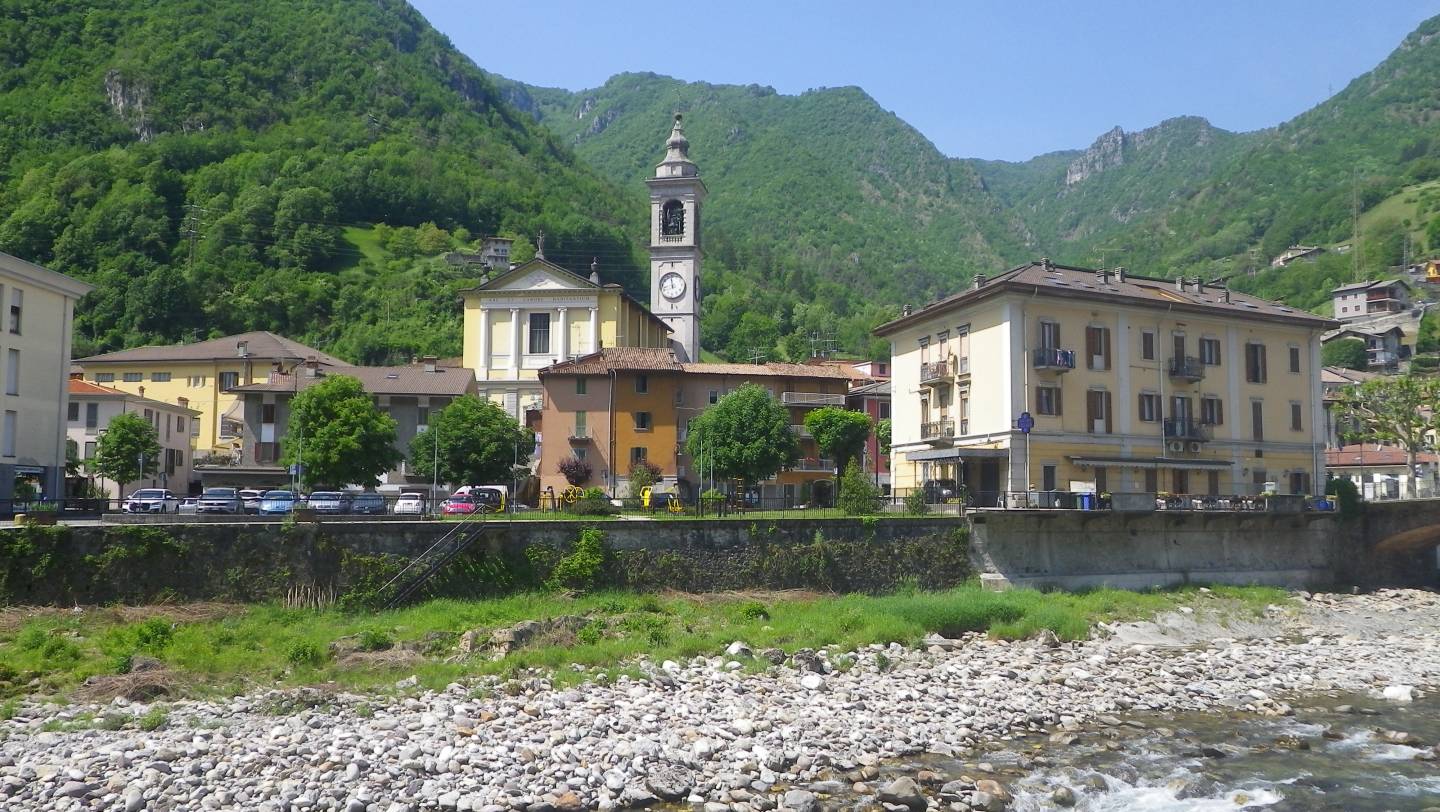
San Pellegrino parish church. Built from 1715 on to designs by Francesco Luchini. Neoclassical-style façade. Above the tympanum is a stone statue of San Pellegrino (St. Peregrine). Baroque interior with barrel vault. High altar in white majolica. Rosary altar with polychrome marble and lapis lazuli. Organ by Serassi. Paintings include: Martyrdom of St. Peregrine by Pietro Longhi (18th century); Blessed Virgin of Mount Carmel among Saints by Carlo Ceresa (17th century); Deposition by Francesco di Simone (16th century). In the sacristy, ivory crucifix by the Fantoni workshop.
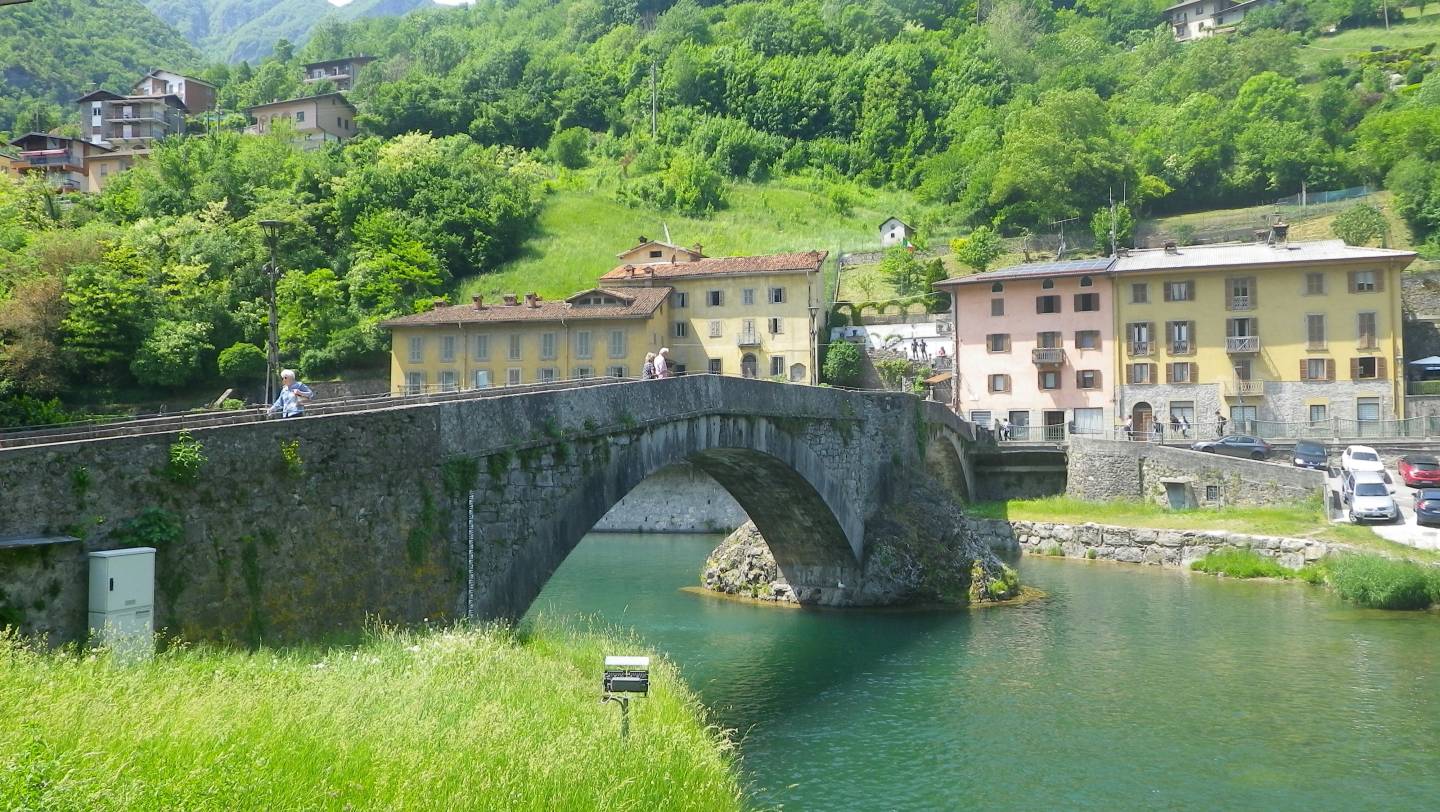
Bridge named Ponte Vecchio (Old Bridge) or San Nicola Bridge. This is the oldest of the five bridges over the river Brembo in San Pellegrino Terme. It dates back to the 17th century and has two wide stone arches.
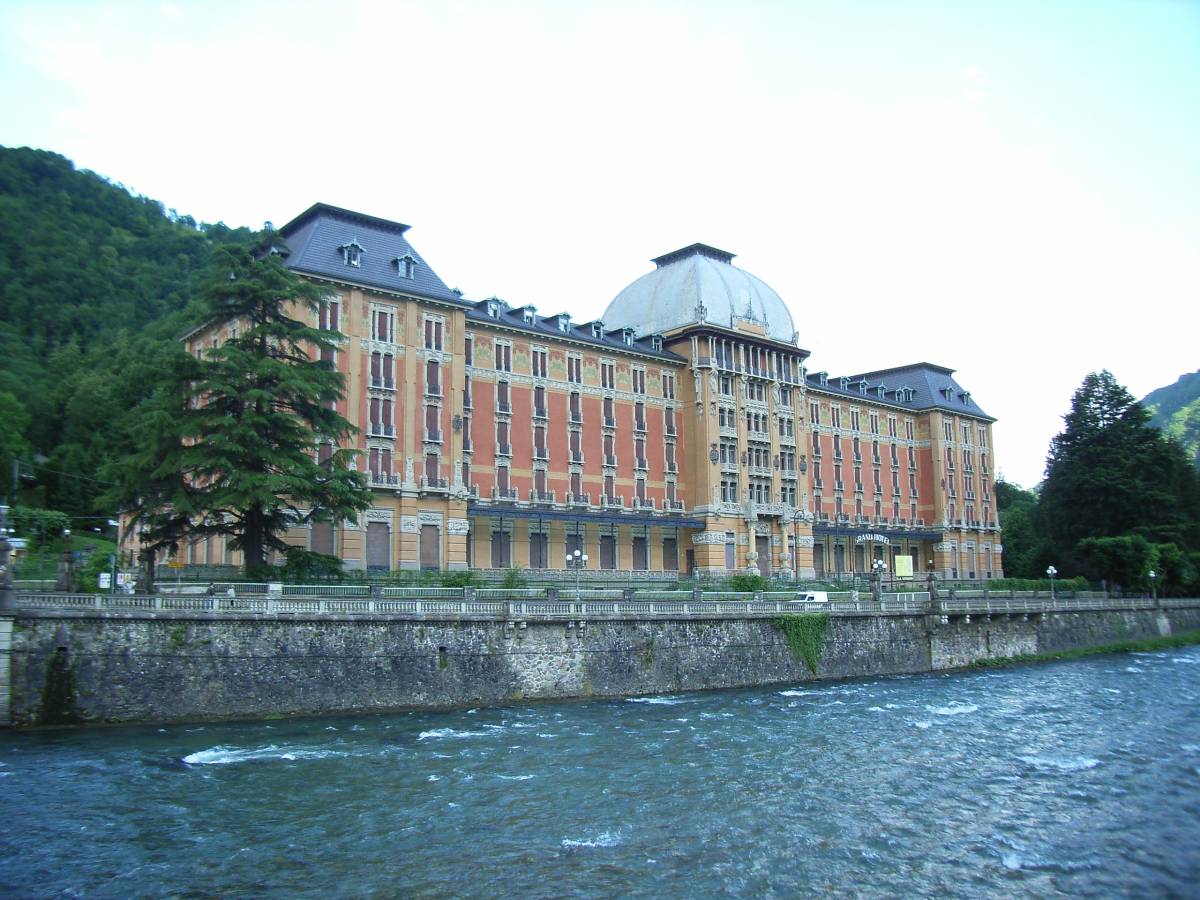
Grand Hotel. In 1903, three years before the railway reached San Pellegrino Terme, the Società Grandi Alberghi (Grand Hotels Company) decided to purchase a piece of land on the river Brembo, a stone’s throw from the station. A few months later the walls of what would become the Grand Hôtel were constructed; it would be a building of disproportionate dimensions for the then still modest setting of the spa town: seven floors above ground level, 200 rooms, an enormous central domed roof, abundant floral-style decorations, a daring use of many different building materials (stone, iron, brick, glass), and a modern and rational layout of rooms and services. Designed by Romolo Squadrelli and Luigi Mazzocchi, and resembling an airship or a castle in the French countryside, the hotel marked the launch of San Pellegrino as one of Italy’s most renowned spa destinations. Squadrelli would later become a designer of railway stations, giving them notable decorative prominence.
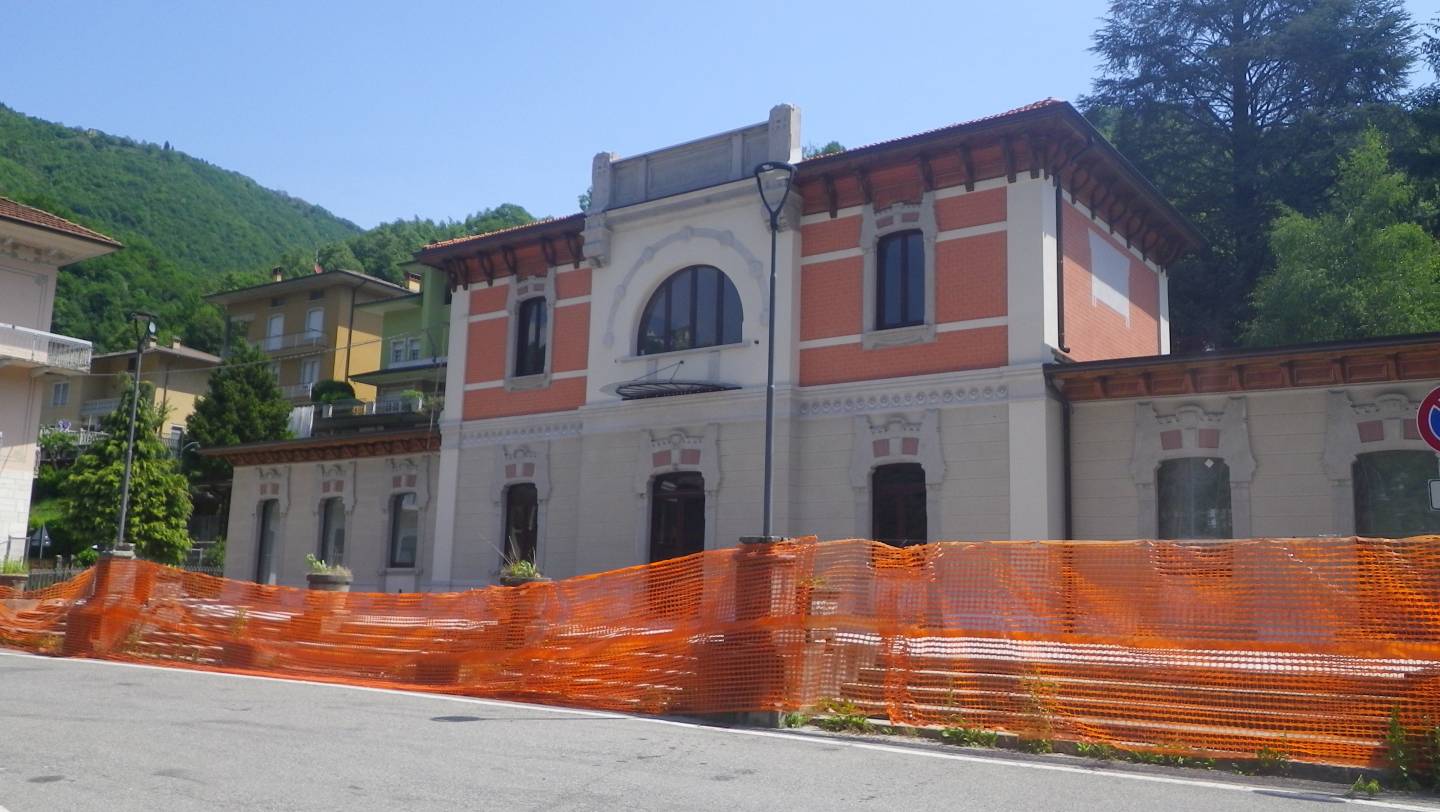
Former FVB station and Ferrovia della Val Brembana (Val Brembana railway). This is a representative example of the various stations located along the former Val Brembana electric railway that began operating in 1906. After the opening of the Milan-Venice railway, which passed through Bergamo in 1857, many operations were launched to connect to this fundamental route other lines running from the Orobic capital towards Lecco, the Brianza area and Lake Iseo. But of particular interest for the Bergamo Pre-Alps were the two lines that ran up the main valleys: Val Brembana and Val Seriana. The first stretch of railway in Val Brembana, from Bergamo to San Pellegrino Terme, a distance of 26 kilometres, came into operation in July 1906, while another 4 kilometres were opened a few months later, reaching San Giovanni Bianco. The final section, just under 11 kilometres, from San Giovanni Bianco to San Martino de’ Calvi Nord (which would later become Piazza Brembana) opened in 1926. The line was among the first in Italy to utilise electric power at 6000 V / 25 Hz alternating current, revolutionary at that time. In addition, the standard gauge ensured satisfactory connection with the state rail network in Bergamo. The choice of electric traction was determined by the fact that the railway intended to attract a lot of freight traffic produced by the industries that had developed in the valley: 54 lines direct to the factories in the area were planned. The distance of 40.8 km was covered in one and a half hours by the electric trains. The stations were attractive buildings by Romolo Squadrelli, the architect who designed the Casino and Grand Hotel San Pellegrino in the floral taste of the day. After the Second World War, the failure to renew the rails (the tracks were still those installed at the outset) and the rolling stock led to the possibility of closure and a decrease in the profitable freight traffic, while part of the passenger service would be taken over by bus routes. In 1966, the merger of the companies Ferrovia Valle Brembana and Ferrovia Valle Seriana, forming the Società Autoferrovie Bergamo, was brought forward to March as a result of the closure of the line due to a structural problem in a tunnel. The following year, the Seriana Valley Railway suffered the same fate. A few years later, several projects were presented for reinstating the railway service, but they never reached fruition. Today, after the launch in 2009 of the Tram delle Valli, running from Bergamo to Albino, virtually a modern version of part of the old Seriana Valley railway, there is news of a similar project from Bergamo to Villa d’Almé towards the Val Brembana valley, currently awaiting funding. In the upper valley, from Zogno to Piazza Brembana, a very popular cycle path has taken the place of the former railway.
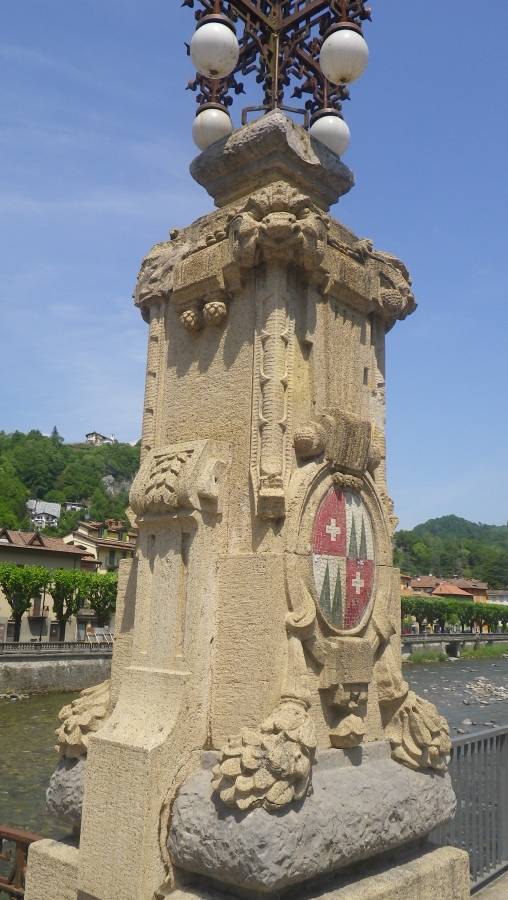
The Umberto I Bridge. Built to a design by engineer Michele Astori and inaugurated in 1924, it replaced the previous wooden bridge. In 1923 it was named after Prince Umberto. At the entrance to the bridge, there are decorative concrete piers designed by Antonio Cavallazzi. The same piers can also be seen in other locations of the municipality, such as at the entrance to Parco della Fonte (Park of the spa spring).
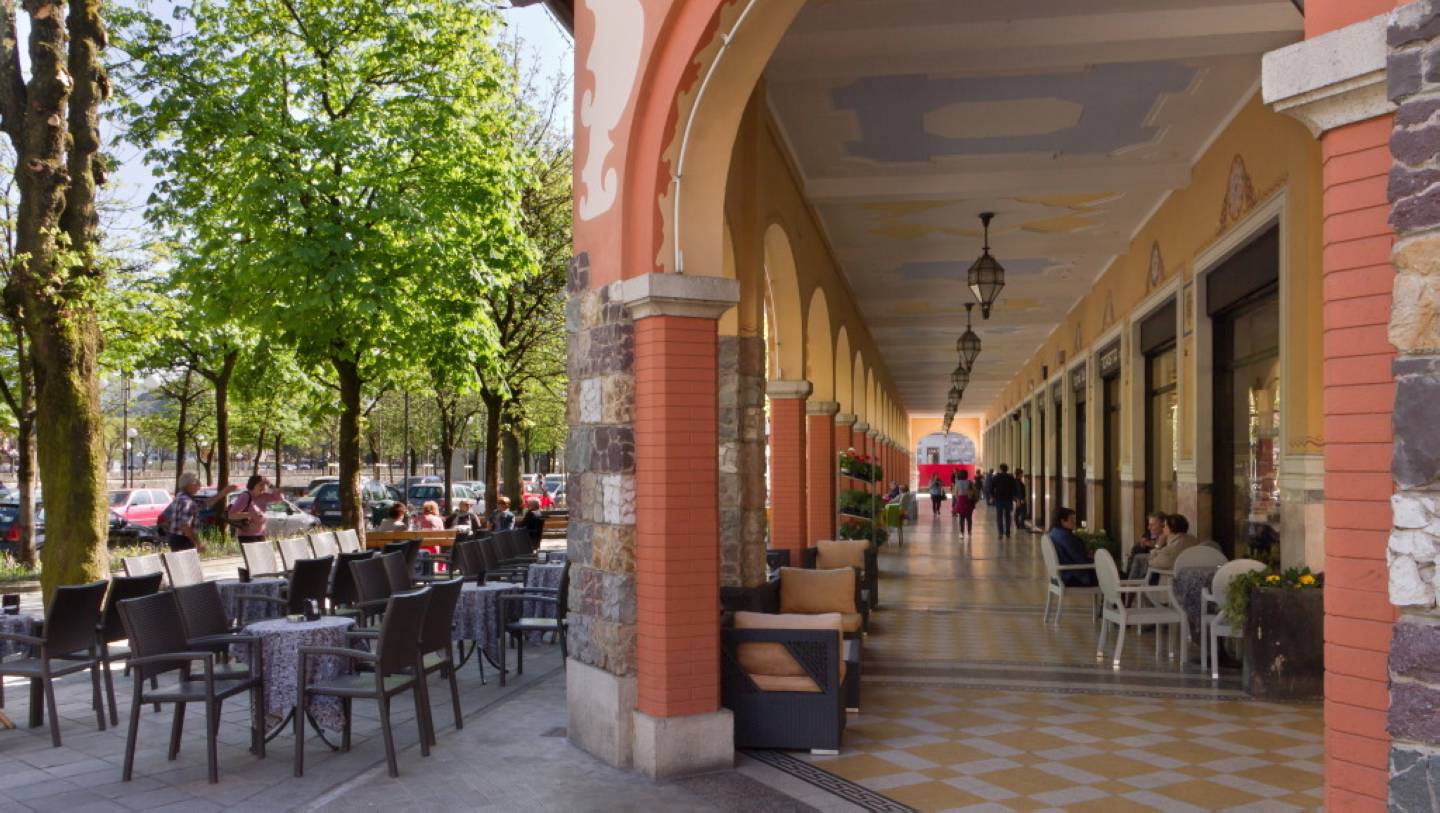
the Colleoni porticoes. An elegant covered city promenade, built in 1930, with a style whose touches of modernism mark the end of the spa’s Art Nouveau season.
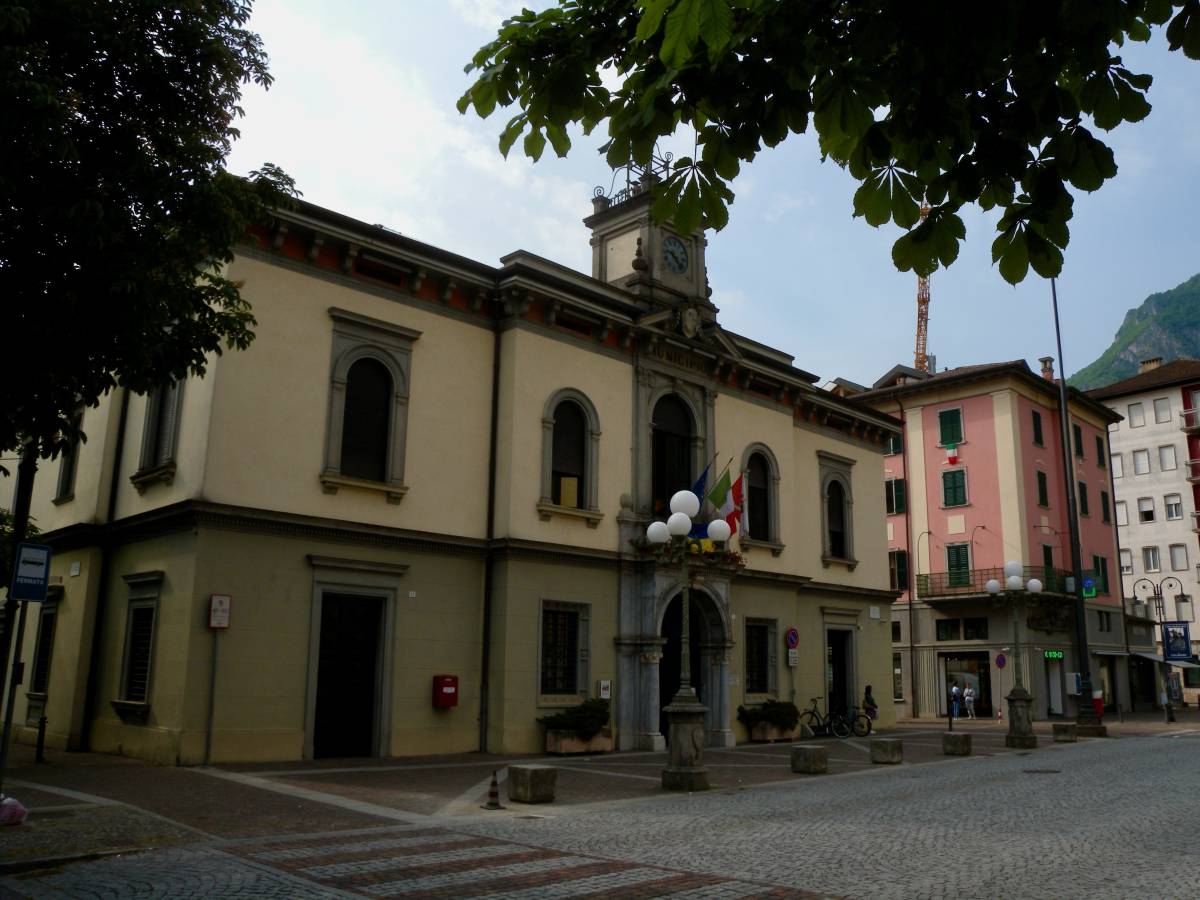
Town Hall. Built in 1890, it was enlarged in neo-Renaissance style, initially in 1906 by Romolo Squadrelli, with two- and three-light mullioned windows and various decorations in the interiors, and then in 1930 by Luigi Angelini.

Casino. A sumptuous Art Nouveau building dating to 1907, the outcome of designer Romolo Squadrelli’s collaboration with Bergamo’s most skilled decorators and artisans working in iron, glass and plaster. The fantastic façade, decorated with high-reliefs in artificial stone, allegorical groups, masks, anthropomorphic elements, human busts, putti, an abundance of floral motifs and artistic iron lanterns, culminates in Mazzucotelli’s large wrought-iron flagpole, supported by telamons, symbols of human toil; at the base are frescoes of stag beetles which, like butterflies, symbolise Art Nouveau. The collective effort, in which Squadrelli collaborated with important artists of the time, also produced excellent results inside, where, in a series of allegorical references to the location and the properties of its water, the theme of “joie de vivre” is developed, in frescoes by Malerba, bas-reliefs by Bernasconi, sculptures by Vedani, the beautiful stained glass windows by Beltrami and Buffa, and right down to the furnishings, entirely designed by Eugenio Quarti. The façade is particularly interesting, with its two tall towers recalling the earlier Casino de Monte Carlo by Charles Garnier; the rich decorative component with its powerful symbolism includes, among other elements, the wrought-iron lamp holders and flagpole by Alessandro Mazzucotelli, the high reliefs on each side of the central door in “terracotta-treated” cement with bacchic scenes by Giulio Croce, and the frieze painted with stag beetle motifs, generally attributed to Francesco Malerba.
Along with the Spa and the Grand Hotel, from the early 20th century the Casino helped create an effective pole of attraction for many wealthy guests, who had many opportunities for recreation and entertainment in San Pellegrino. It was a “fairytale” world, populated by queens and princesses, ministers and diplomats, personalities from the world of finance, the army, art and culture, from Rome, Paris, Vienna, Berlin, St. Petersburg, London and Cairo. Closing and reopening on many occasions, as part of various projects which on one hand were designed to regulate gambling while on the other intended to enhance the fortunes of Italian spas and health resorts, it finally ceased operations in 1946 (https://www.comune.sanpellegrinoterme.bg.it/turismo/casino/).
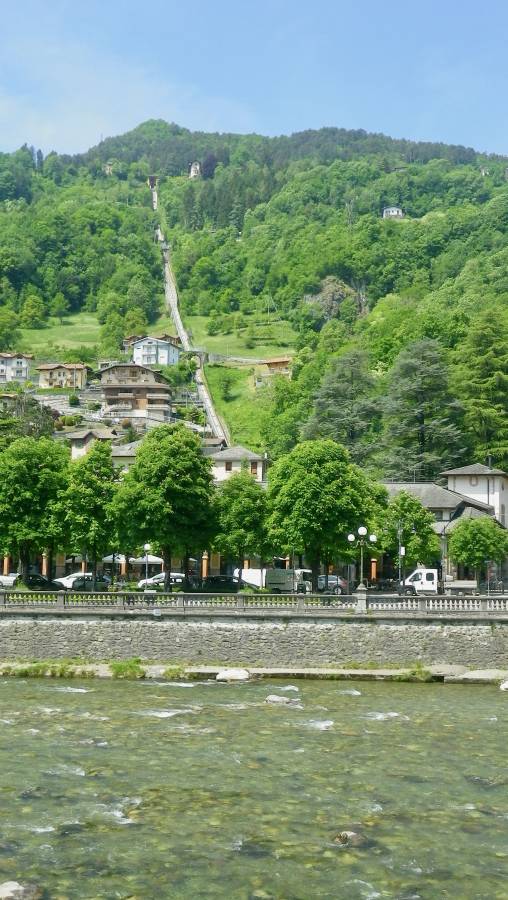
Funicular. A service opened in 1909 and running between Piazzo Basso and Vetta (alt. 909 m) in order to add the outlying hamlets of San Pellegrino to the range of tourist attractions. In 1907, the Fonte Bracca company commissioned the construction of the funicular, which was built by the company of engineer Giuseppe Villoresi, who also worked on the tracks, the hotel and his private villa, which would later become the home of motorist Gigi Villoresi. Closed in March 1989, it has recently been relaunched. The funicular, which leads from Viale della Vittoria to Vetta, has a single track, doubling halfway up the slope. The route is just over 700 metres in length, with a vertical ascent of almost 300 metres and an estimated ascent time of 210 seconds – just over three and a half minutes – while the maximum hourly capacity is 315 people per carriage.
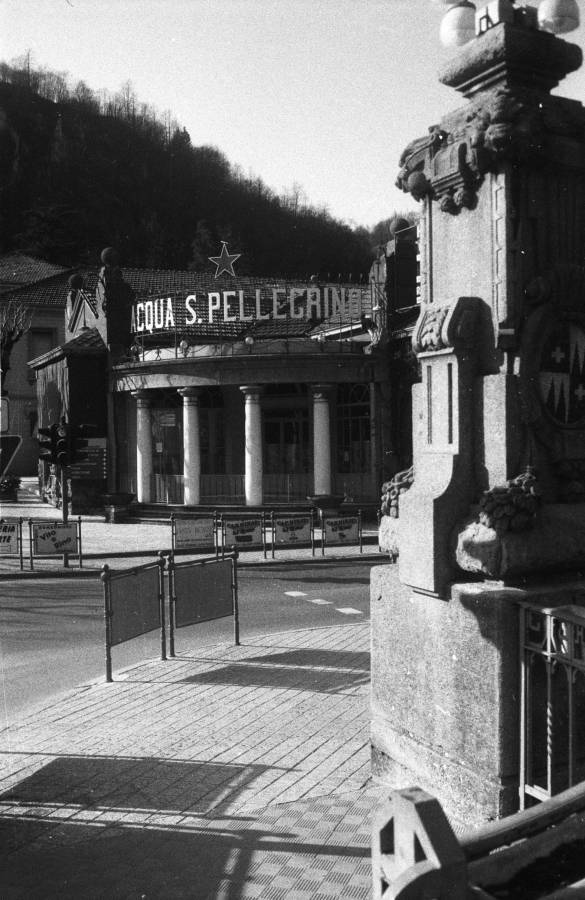
Spa Resort. Built in 1901, the “Stabilimento dei Bagni” is a symbol of the town in Val Brembana and of its vocation as a spa. Its Art Nouveau style reflects the success of the early 20th century when San Pellegrino was famous as a health resort for its salubrious waters. Familiar right from the early Middle Ages, and mentioned by Leonardo da Vinci in the map drawn between 1482 and 1512 during his trip to the Valle Brembana valley, the springs had acquired therapeutic repute as early as 1799, but were still relatively unfamiliar in the early 19th century, when the village itself was also considered as of minimal importance. It was only in 1848 that the Palazzolo family, who were then owners of the most important spring, built the first spa, followed by the Salaroli family who opened a second spa close to the first. In 1901, the “Stabilimento dei Bagni” (Bathing Resort) and the Sala Bibite (Drinking Hall) were inaugurated. The spacious and pleasant interior, equipped with many spouts for sampling spa water, had decorations on the ceiling and extensive walls with Pompeian-style frescoes depicting mythological figures, allegorical motifs and various floral elements. Next to the Drinking Hall is the elegant portico, set on twenty wide-spanning arches supported by massive granite columns, linking the spa to the Casino. San Pellegrino Terme’s natural mineral water emerges from three springs of identical characteristics, all close one to another, at the base of the south face of a dolomitic cliff, consisting essentially of calcium carbonate and magnesium carbonate, rising about 600 metres right up to the Belvedere summit. The highest and most abundant spring is named “Palazzolo”; the other two are called “Salaroli” and “Fonte Vecchia”. (https://www.comune.sanpellegrinoterme.bg.it/turismo/terme/)
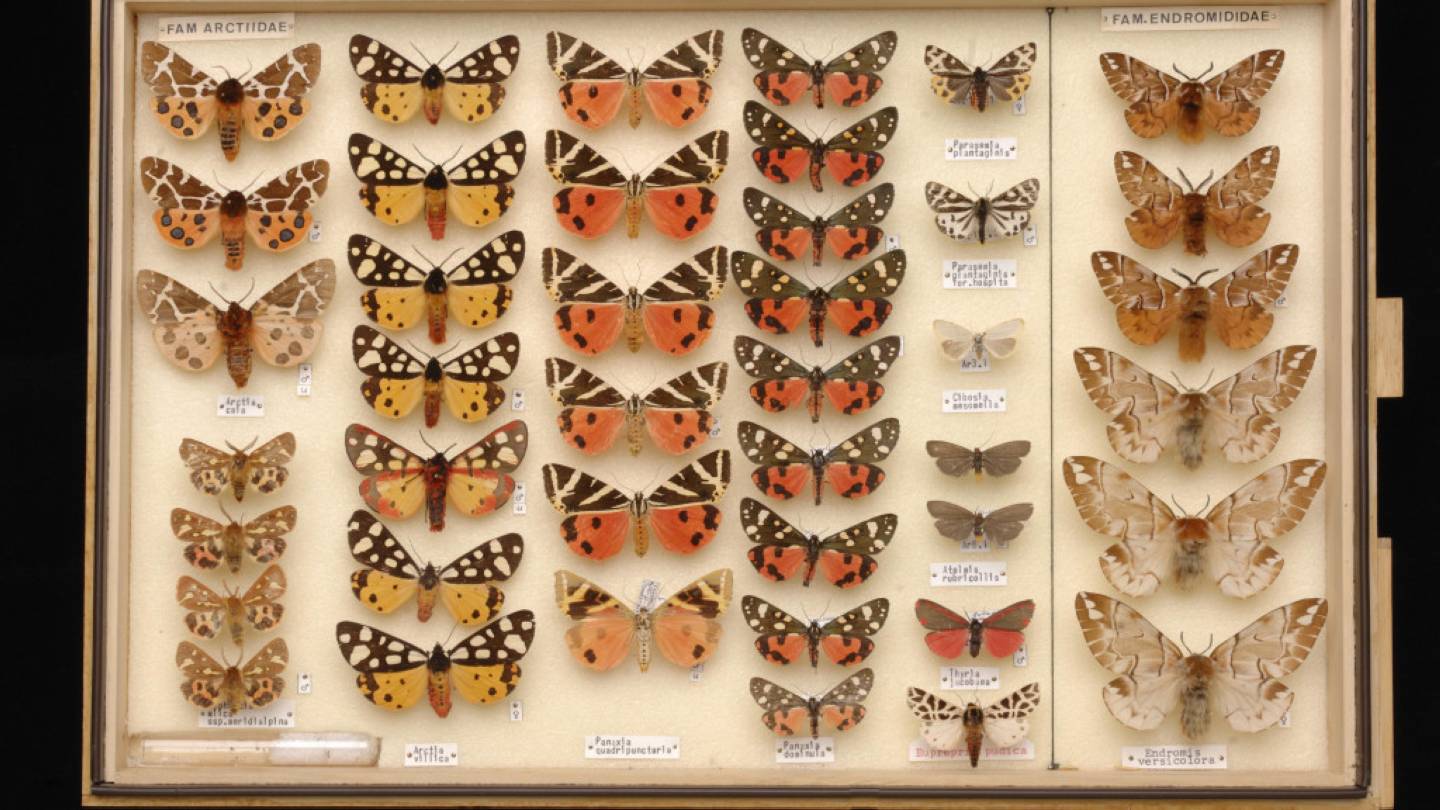
(Brembano Museum, Villa Speranza, Via San Carlo, 32). Its definitive location in the specially-prepared interiors of Villa Speranza arrived in 1996, but the origins of the Brembano Museum of Natural Sciences date back to 1978 when, following an earlier finding in Endenna di Zogno and the subsequent recovery of a considerable number of palaeontological finds, the museum’s initial core collection was created, to which the entomological section was later added. In these years, the endowment of fossil findings has reached high levels of knowledge and specialisation, making it a fundamental point of reference in the field, not only with regard to the Brembana valley area, but also in a wider context. In fact, in 2007 the Brembano Museum of Natural Sciences became part of the “TRIASSICO.IT” Museum System, which includes other museums in our province such as Museo Civico di Scienze Naturali “E. Caffi” (the E. Caffi Civic Museum of Natural Sciences), Parco Paleontologico di Cene (the Cene Palaeolontological Park) and the Val Brunone Natural Monument (https://www.comune.sanpellegrinoterme.bg.it/turismo/museo-brembano/).
Rock climbing wall. A popular limestone cliff near the cycle-pedestrian path and the river Brembo.
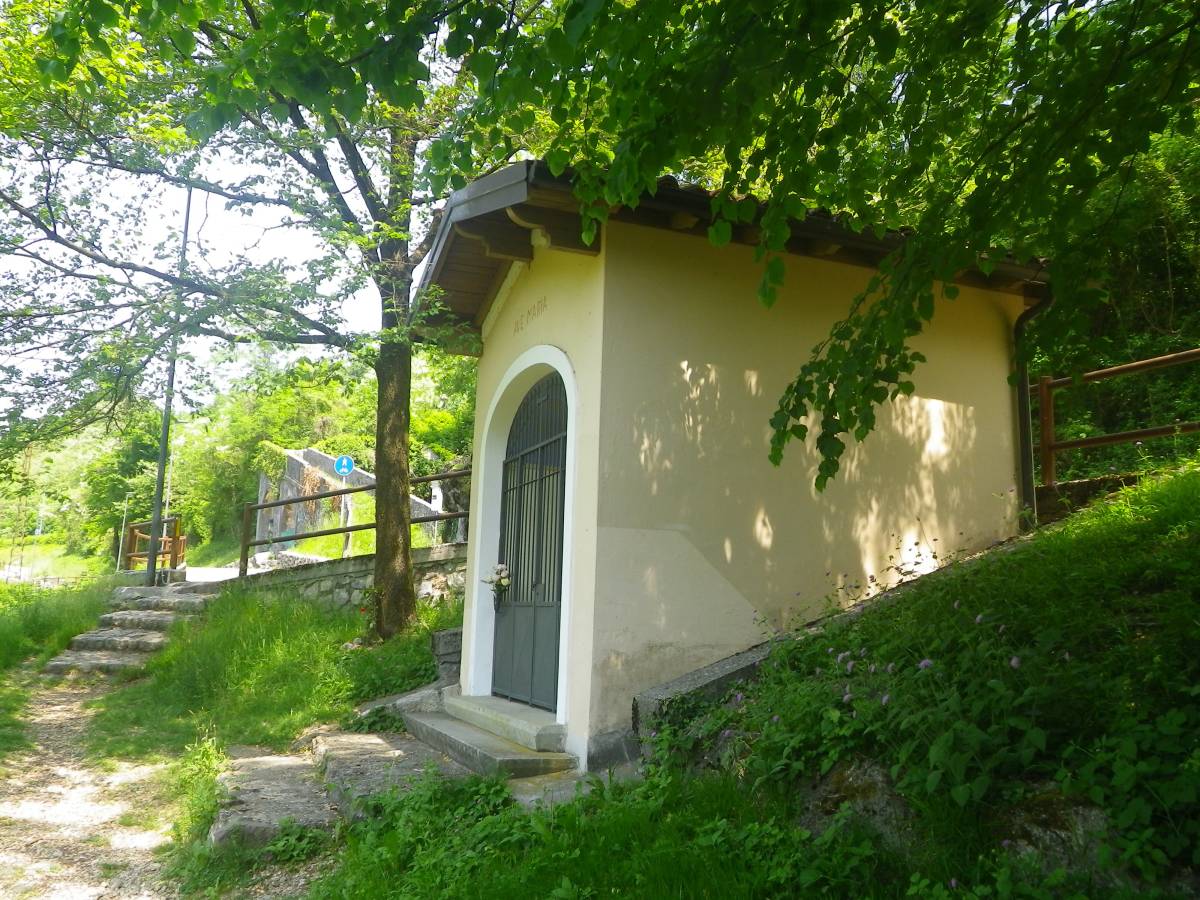
Chapel of the Madonna. Small and simple gabled chapel set on the path along the river Brembo at the start of the track to Monte Gioco.
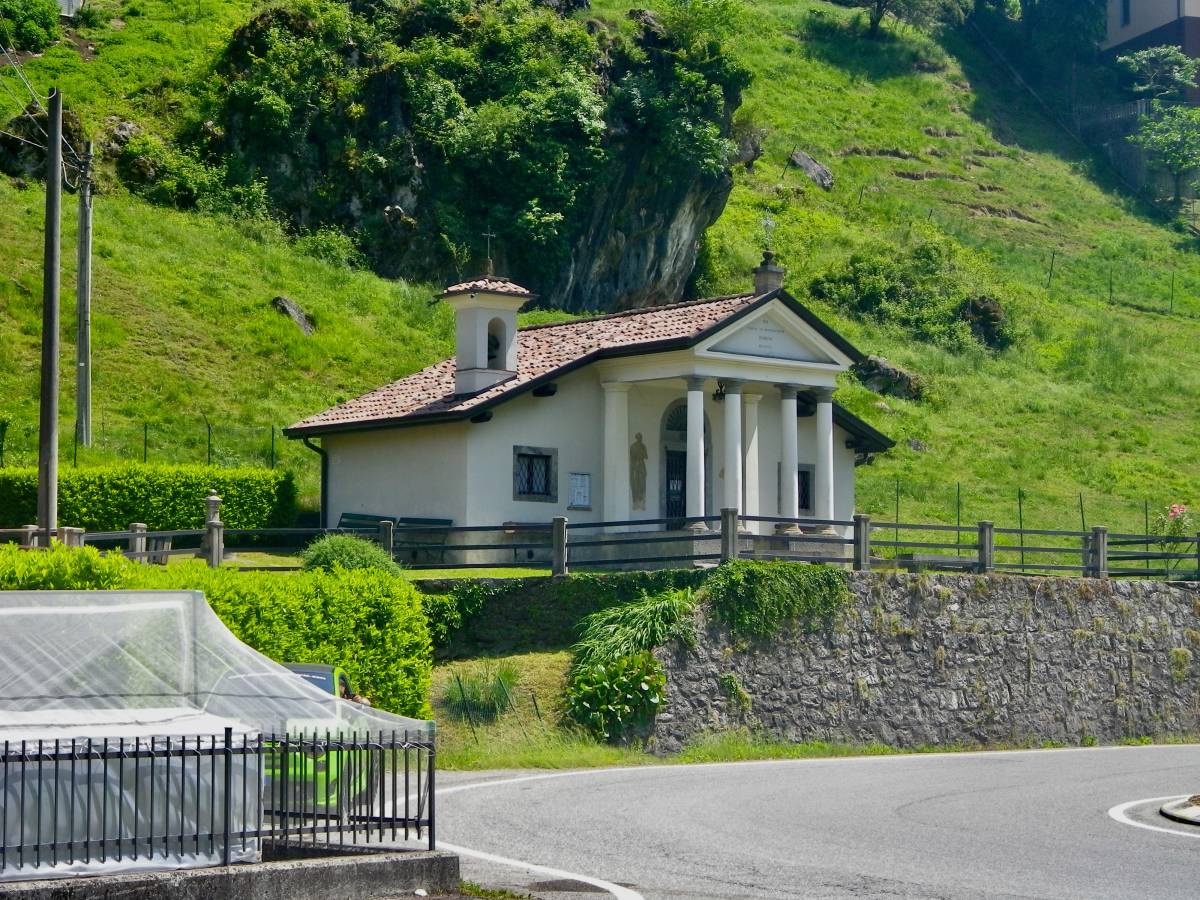
Caderizzi Church. A small church built in 1840, with a gabled roof and a neo-classical pronaos, located near the Antea roundabout. There are two fragments of frescoed figures on the façade. Inside: Madonna of the Rosary with St. Roch, St. Sebastian and St. Anthony of Padua.
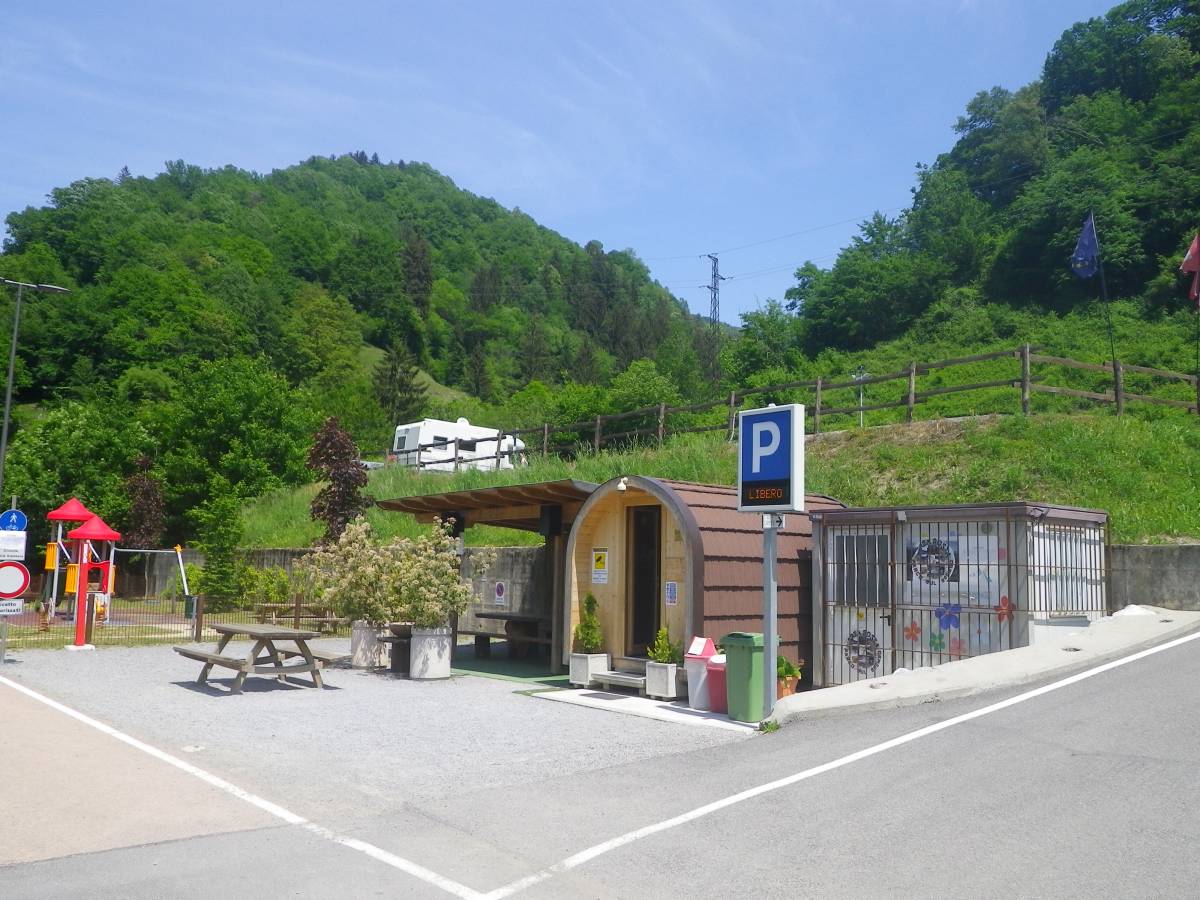
Antea picnic area. An area set on the Val Brembana cycle/pedestrian path, near the Via Mercatorum route. Tables, bicycle parking, drinks dispenser, campervan parking, electric recharging station.
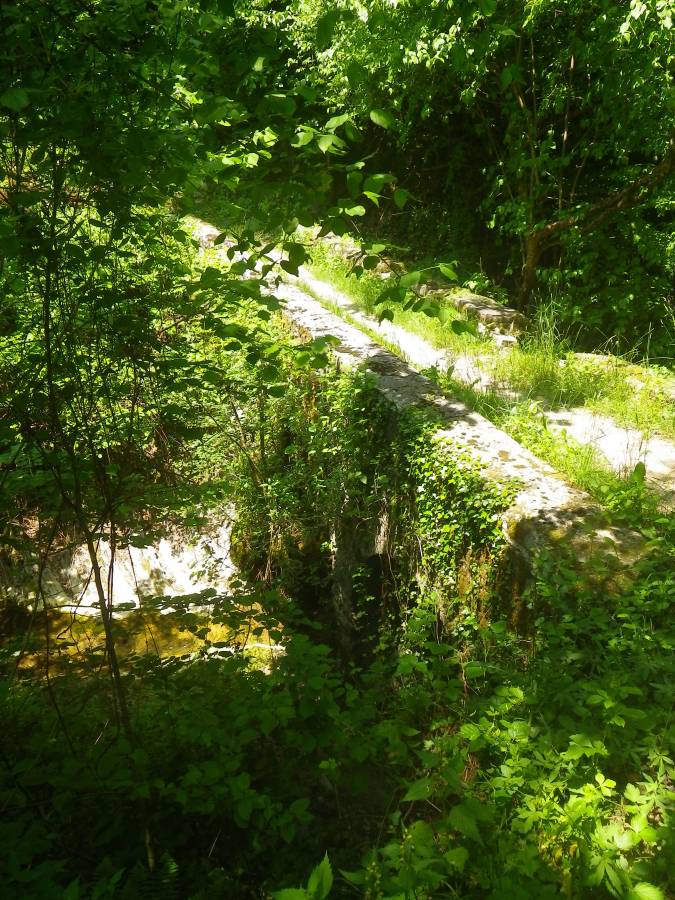
Bridge over the Valle Asnera valley. A small bridge of uncertain date (probably 19th century) on the mule track on the left bank of the river Brembo, over the Valle Asnera valley, at the boundary between the municipalities of San Pellegrino Terme and San Giovanni Bianco. It consists of a single round arch and two low side parapets designed so as not to obstruct the passage of pack animals.
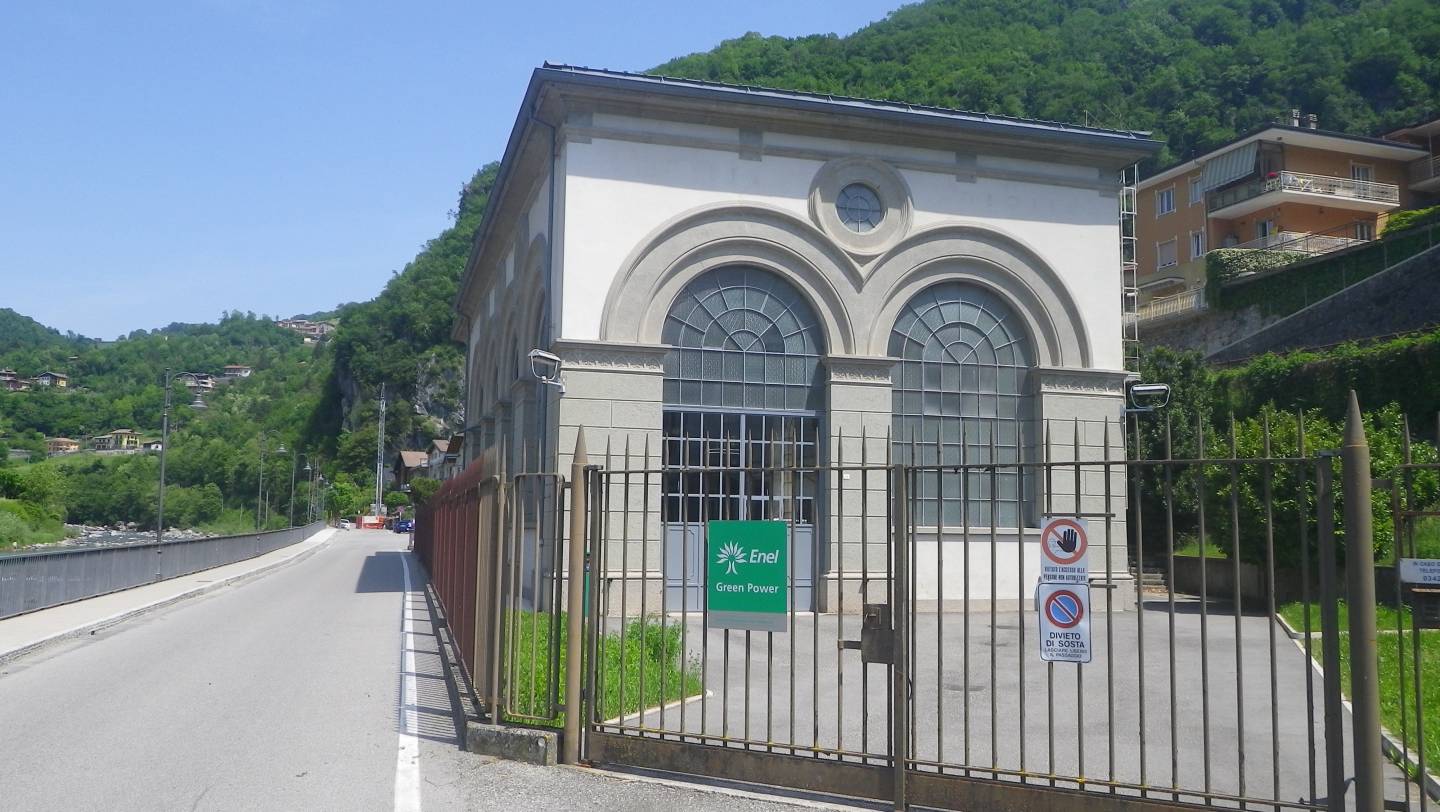
Orobia power station. The Orobia power station was built between 1907 and 1908 in order to supply power to a number of companies in the Brembana valley and Lecco areas. It provided 3,000 horsepower, generated by a 16-metre water drop from the San Giovanni Bianco canal. It comprised a 4 km canal, 2.5 km of which in tunnels, with a water flow rate of 10 cubic metres per second. Another important building, unrelated to tourism or spa culture but nonetheless elegant in forms, in perfect harmony with the Art Nouveau style, was the water bottling factory, commissioned in 1905 and equipped with semi-automatic machinery to replace the previous manual processes, though still employing about sixty people. Since the 1960s, spring water has been channelled to outskirts of the town, where the current factory is located; in the early 2000s, the old production site was definitively dismantled to provide room for the new project for the relaunch of tourism and spa facilities (https://www.visitbrembo.it/it/dove-andare/poi/centrale-idroelettrica).